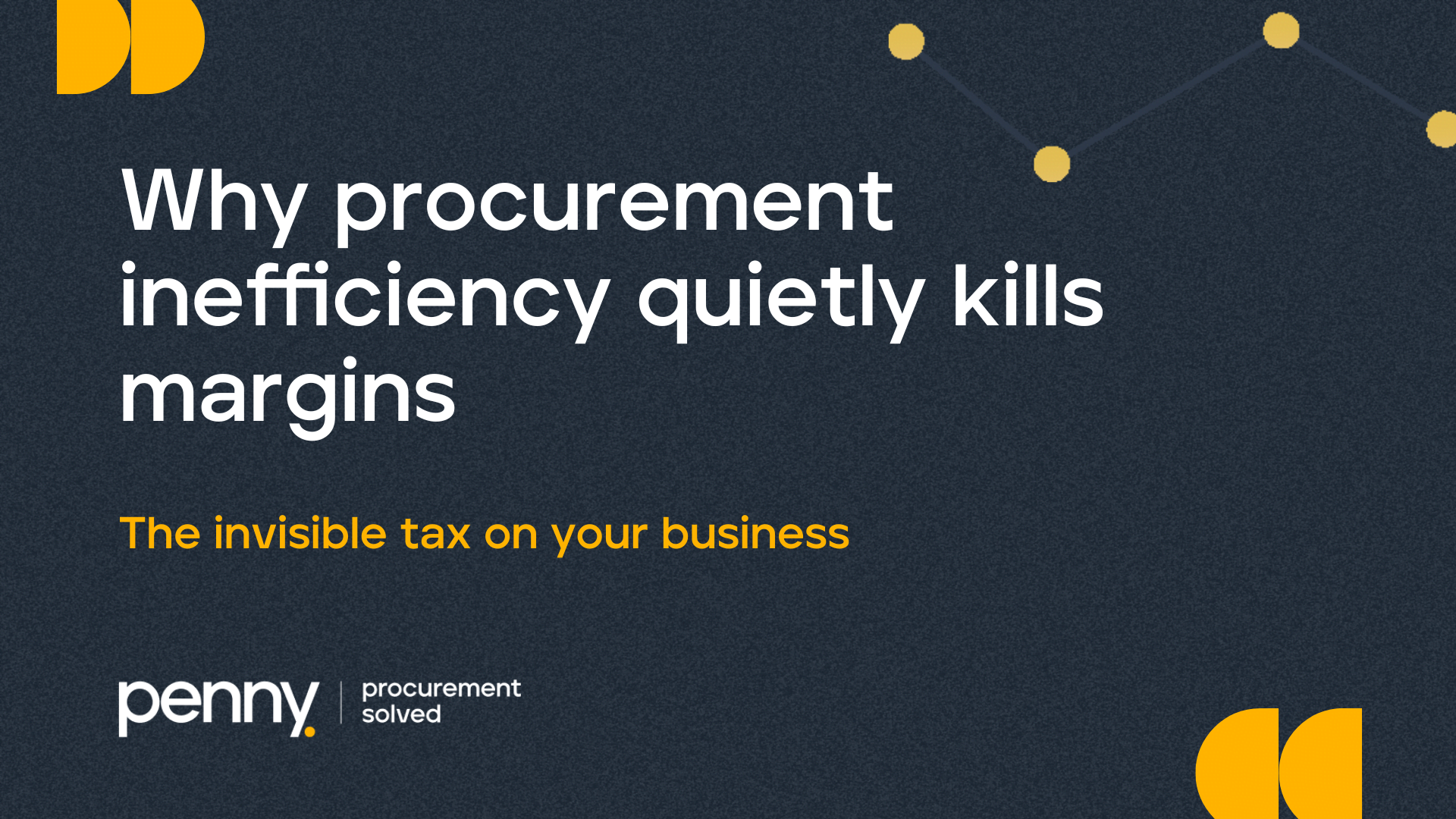
The invisible tax on your business:
If you’re spending $50 million a year through your sourced procurement function, you may be silently leaking between $2.5 and 5 million. Not through fraud. Not through poor suppliers. But through process inefficiency, manual workarounds, and a lack of visibility, the worst part is that you probably can’t even see it.
This isn’t a waste in the traditional sense. It’s slow, systemic erosion of value, rooted in outdated workflows, siloed systems, and decision-making by spreadsheet.
And it compounds silently year after year!
What procurement inefficiency Really looks like
Let’s break it down practically. Inefficiency often hides in:
- Approval delays: Requisitions bounce around inboxes for weeks. By the time they’re approved, pricing has changed or the project is delayed.
- Decentralised purchasing: Business units bypass procurement to “get things done faster,” leading to inconsistent pricing and duplicate supplier relationships.
- Missed discounts: Finance negotiates early payment terms or volume deals that are never tracked or realised.
- Rework and errors: Manual data entry between tools (ERP, Excel, email) introduces mistakes that lead to corrections, delays, or even disputes.
- No contract compliance: Teams buy outside preferred vendors or contracts, often 10–20% more expensive per item.
None of these inefficiencies shows up as a red flag in the P&L, but it shows up in time lost, margins squeezed, and operational drag.
“Industry benchmarks indicate that roughly 20–35% of spend goes unmanaged, whether as ‘tail spend’ or outside preferred processes which possesses a gap that silently erodes margins.”
Even a conservative 5–10% inefficiency rate translates into millions left on the table.
Why you can’t see the waste
This kind of waste stays hidden because:
- ERP systems are designed for recording transactions, not for giving strategic insights into HOW things are bought.
- Dashboards show what was spent, but not why or how efficiently it was executed.
- No one owns the end-to-end view: Procurement handles sourcing, finance handles payments, and operations handle suppliers. But who owns optimization?
In essence, there’s no mirror. No visibility into what “great” looks like. And without clear benchmarks, inefficiency is accepted as the norm.
How leading companies see (and stop) the bleed
To course-correct, you don’t need new software right away. You need new thinking!
Here are three product-agnostic moves that any procurement or finance leader can implement today to make the invisible visible:
1. Run a procurement leak Audit
This isn’t a traditional spend analysis. Instead, it focuses on operational loss:
- How many POs are raised after the invoice arrives?
- How many supplier contracts are actually enforced?
- What % of spend goes through approved workflows or catalogues?
- How often are we missing out on early payment discounts?
- What are the cycle times from requisition to approval to PO to delivery?
You’ll uncover eye-watering gaps, and you’ll know exactly where to dig deeper.
Pro tip: Start with one high-volume department (e.g. operations or marketing) and audit just one quarter’s spend.
2. Establish “cost of delay”metrics
Every approval delay, every sourcing bottleneck, has a cost in hours, lost productivity, project delays, or expedited shipping. But most organizations don’t track this. Quantified to Dollars and cents, it is a staggering amount of money that is being wasted on inefficiency.
Set up a simple internal SLA metric:
- Target: Requisition to PO in ≤5 business days
- Actual: X days (and how many % missed)
- Impact: Estimated lost opportunity or increased cost
This gets procurement out of the admin silo and into strategic conversation. Now the CFO can ask: “How much did these delays cost us last quarter?”
3. Create a tactical procurement KPI dashboard
Forget the high-level “Total Spend” figures. Instead, track:
- % spend under contract
- % spend with preferred vendors
- Average cycle time (req-to-PO)
- % of purchases that triggered rework (due to errors or misalignment)
- % of missed early payment discount opportunities
- Maverick spend as % of total
Align this with your finance and operations heads. Suddenly, procurement becomes a driver of EBITDA, not just compliance.
Final thought: Procurement isn’t broken. It’s UNDERUTILIZED!
Most CFOs and COOs wouldn’t accept a 10% margin loss from sales or delivery. Yet procurement inefficiency is tolerated, even when it silently cuts just as deep.
The companies that win in the next 5 years will be the ones who treat procurement as a profit lever, not an admin cost. But you can’t optimize what you don’t see. Start by turning the lights on — and then measure what you find.
Our Procurement Inefficiency Checklist helps you do exactly that, with questions covering visibility, process efficiency, cost control, and strategic alignment. Score your performance, pinpoint hidden gaps, and see where the biggest savings opportunities lie.
📄 Download the checklist to find out how your procurement function really measures up.

